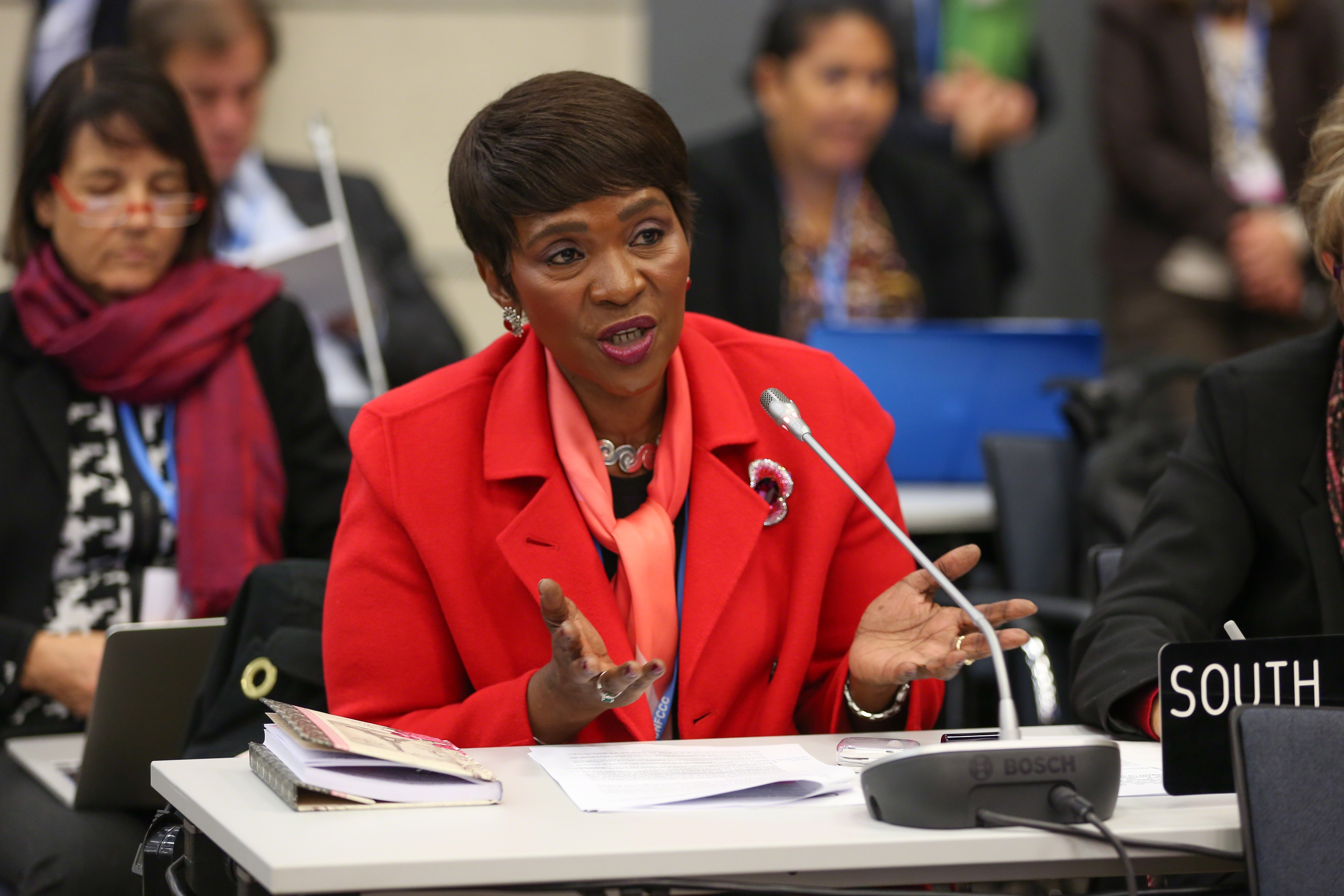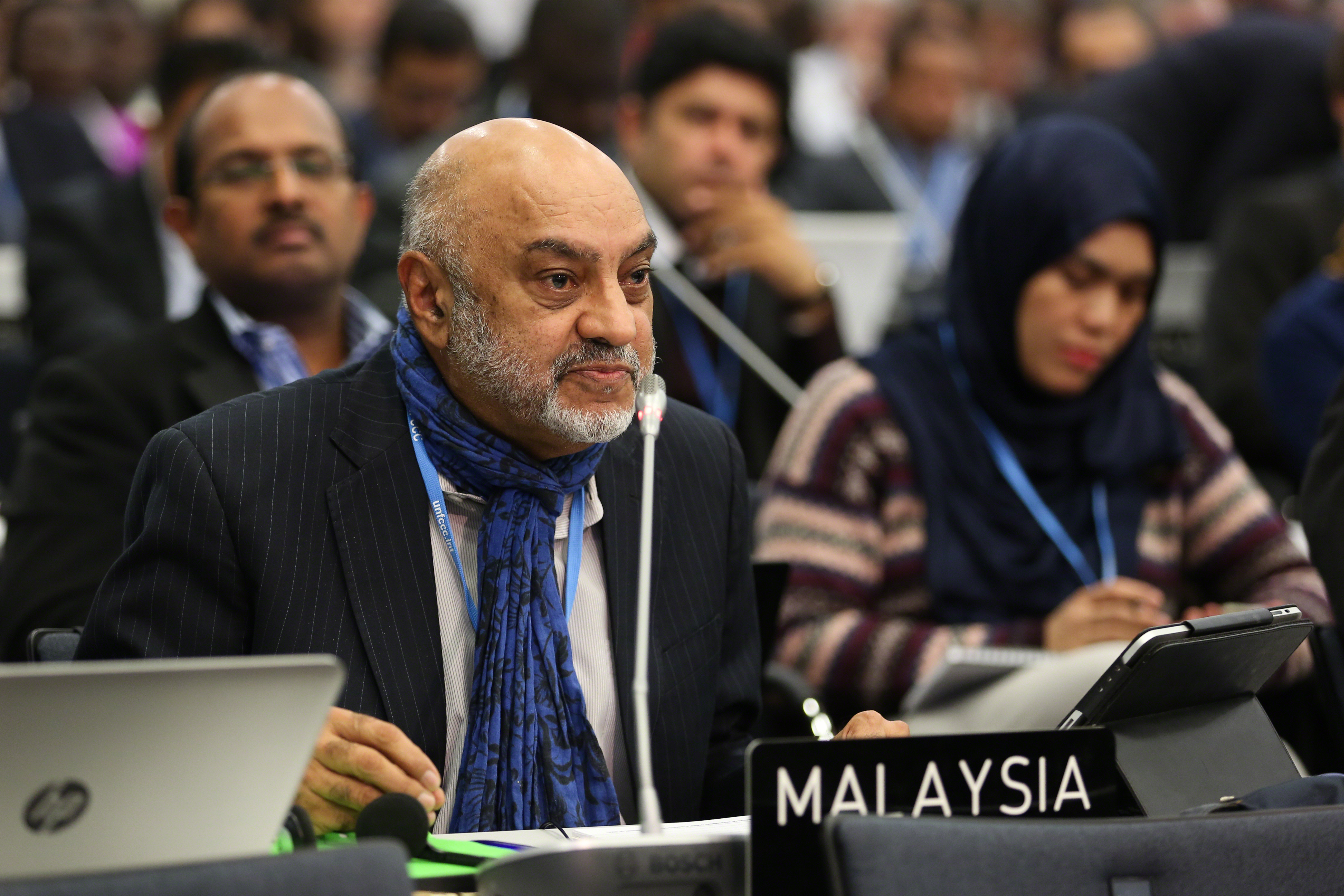By: Tamara L. Slater

Opening plenary at ADP 2-11 in Bonn, Germany (Photo by IISD/ENB)
The final two weeks of negotiations over a global climate change treaty will commence in less than 40 days, but confusion about the likely outcome remains high. The 196 Parties to the United Nations Framework Convention on Climate Change (UNFCCC) are nearing the end of a four-year old mandate to create “a protocol, another legal instrument or an agreed outcome with legal force” that will ensure international collaboration on climate change mitigation and adaption by the end of 2015. The parties committed to this process four years ago at the 17th UNFCCC Conference of the Parties (COP 17), held in Durban, South Africa, at which the Ad Hoc Working Group on the Durban Platform for Enhanced Action (ADP) was established. There will have been 14 weeklong ADP negotiations leading up to COP 21, expected to draw 40,000 delegates and non-state observers to Paris this December, in an effort to ensure that the text can realistically be finalized in the allotted two weeks.
The penultimate meeting of the ADP, ADP 2-11 (the eleventh part of the second session), concludes this Friday in Bonn, Germany. Twenty-three years after the UNFCCC was signed at the “Earth Summit” in Rio de Janeiro, 20 years after the first COP, and four years into this current working group, what are the prospects for a meaningful international climate change agreement? In an upcoming blog I will analyze the final text coming out of ADP 2-11. In this post, I seek to provide some context for this week of negotiations.

Nozipho Mxakato-Diseko, South Africa (Photo by IISD/ENB)
During the very first plenary of ADP 2-11, the usual battle lines in international negotiations were again drawn and articulated. The delegate from South Africa, speaking on behalf of the negotiating group called “G-77 and China,” made up of 134 developing countries, expressed in very strong terms their disappointment that the interests of developing nations had been written out of a document drafted at the request of Parties following ADP 2-10 by the ADP Co-chairs, who are tasked with maintaining dialogue among the Parties. This “Non-Paper” was meant to summarize prior negotiations and serve as the base for negotiation language going forward. The Non-Paper succeeded in substantially shortening the document to 20 pages from the 45-page text that came out of ADP 2-10, already pared down from the 90-page text that came out of ADP 2-8 in Geneva, Switzerland. According to delegates across negotiating groups, however, it failed at accurately reflecting prior negotiations. Developing countries in particular felt “disenfranchised” by the process, the most vocal being the delegate from South Africa and the delegate from Malaysia, representing a G-77 and China sub-group called the Like Minded Developing Countries (LMDCs).

Gurdial Singh, Malaysia (Photo by IISD/ENB)
This conflict was not merely about whose voice and concerns the UNFCCC Secretariat reflected in the Non-Paper, although it raises legitimate concerns about equity and human rights. It was also likely a pivotal moment in the negotiations when the parties took ownership over the document. After many delegations, most notably the G-77 and China but also the European Union, United States, and others, expressed displeasure at the draft, Parties agreed on a process by which “surgical insertions” of key language would be put back into a new draft text. This process only increased its length by 14 pages, to the relief of many. By Tuesday morning, parties were largely pleased with the results, although some language was inadvertently excluded and, as many noted, some insertions were not particularly “surgical.”
During informal conversations with veteran non-party observers as well as two more formal meetings, one hosted by the Co-chairs and one by the Executive Secretary of the UNFCCC, Christiana Figueres, it became clear that the Non-Paper was written by two deeply experienced diplomats whose goal was to “catapult parties into taking ownership of the text.” Ms. Figueres further explained that these are “growing pains.” She was adamant that, although it is a painful and messy process, it is a healthy one.
Unlike at COP 20 in Lima, Peru last year, the negotiations were closed to observers after the first day. Blocking out civil society has caused a lot of controversy and frustrating amongst observers, including the staging of protests. Details about the negotiation progress are provided for state delegates and observers during brief “stock-taking sessions” held by the ADP Co-chairs once or twice a day and reporting conducted by the International Institute for Sustainable Development (IISD)’s Earth Negotiations Bulletin, which are allowed in closed negotiations sessions but report the conversation without attribution to specific states. It is unclear whether removing observers from the room has sped up the process, but it may indicate a desire among the negotiators to tone down the publicity-style diplomacy and ramp up efforts to make this text a strong starting point for Paris in December.
